What is HVAC? Understanding the Meaning of HVAC
What does HVAC mean?
Hey there! Let’s dive into the HVAC meaning. You might have heard the term and wondered, “What’s that all about?” HVAC stands for Heating, Ventilation, and Air Conditioning. It’s the hero behind the scenes, making sure we’re cozy, breathing easy, and not spending a fortune on energy bills.
So, Whether you’re a homeowner, a business owner, or simply someone curious about HVAC meaning, you’re in the right place. We’re going to break down what HVAC is, why it’s so important, and how it keeps our spaces just the way we like them.
First off, HVAC isn’t just about staying warm in winter and cool in summer. It’s a big deal for air quality, energy use, and even looking after our planet. Understanding the HVAC meaning helps you make informed decisions about installing, maintaining, or upgrading your system, whether at home or in a commercial setting.
What’s Inside an HVAC System?
Furnace
A furnace is essential for heating an HVAC system, especially in colder climates. It burns fuel like gas, oil, or electricity to produce heat, which is then distributed through the home or building via ductwork.
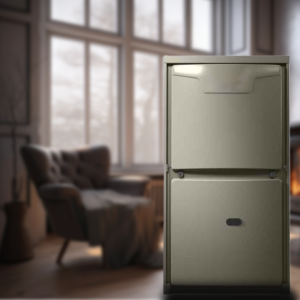
Heat Pump
Separate from a furnace, a heat pump serves a dual function – it can heat and cool a space. In heating mode, it extracts heat from the outside air (even in cold temperatures) and transfers it indoors. In cooling mode, it reverses the process, removing heat from the indoor air and releasing it outside. Heat pumps are often more energy-efficient than traditional furnaces and are ideal in climates with moderate heating and cooling needs.
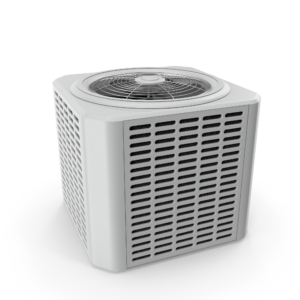
Air Conditioner
On the flip side, the air conditioner is key for those hot days. It works by removing heat and humidity from indoor air. Using refrigerant, it absorbs heat from the inside and releases it outdoors, thus cooling the indoor space efficiently.
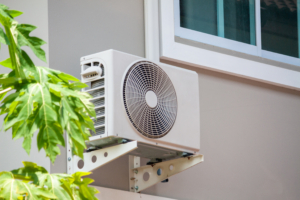
Ductwork
Think of ductwork as the circulatory system of your HVAC. It’s a network of tubes that transports heated or cooled air throughout your home or building. Properly designed and maintained ductwork ensures even distribution of air, maintaining consistent temperatures in different rooms.
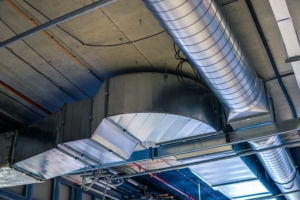
Vents
Vents are the system’s access points in each room, allowing air to be delivered into and extracted from the space. They come in various types, such as supply vents for distributing conditioned air and return vents for pulling in indoor air to be heated or cooled.
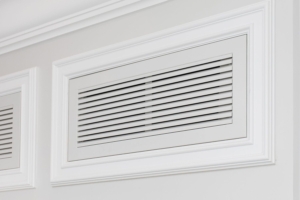
Air Exchangers
Air exchangers are key for ventilating indoor spaces. They replace stale indoor air with fresh outdoor air, maintaining air quality. They’re especially important in tightly sealed homes, as they help to reduce pollutants and moisture, which can lead to mold and mildew.
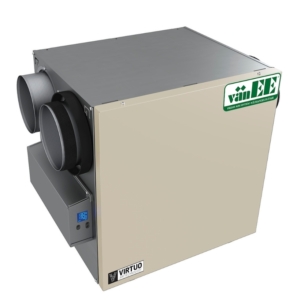
Humidifiers
Integrated into HVAC systems, humidifiers add moisture to the air, which is particularly beneficial in dry climates or during winter when heating systems can dry out the indoor air. Proper humidity levels make indoor environments more comfortable and can help alleviate problems like dry skin and respiratory issues.

Thermostat
This is the control center of your HVAC system. The thermostat allows you to set your desired temperature and maintains it by signaling the HVAC system to turn on or off as needed. Modern thermostats can be programmable or even smart, offering remote control and energy-saving features.
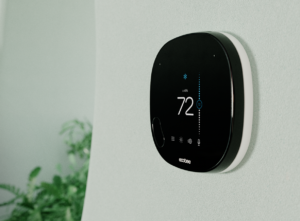
Air Filters
Lastly, air filters are essential for maintaining air quality. They trap dust, pollen, and other airborne particles, preventing them from circulating through your home. Regularly changing or cleaning these filters is crucial for efficient system operation and for keeping the indoor air clean.

Why HVAC Matters?
HVAC is about more than just comfort. It keeps the air clean and helps us use less energy, which is great for our wallets and the planet. By controlling temperature and moisture, HVAC systems make indoor spaces not just comfortable but healthy too.
Energy-smart HVAC systems cut down on bills and are better for the environment. Today’s systems are getting even better at this, balancing cost-saving with caring for the planet.
In places like offices and factories, HVAC is essential for keeping everything running right. It controls temperature and humidity for machinery and processes and makes sure there’s always fresh air, reducing indoor air pollution.
Choosing the Right HVAC Expert!
When it comes to HVAC services, Impressive Climate Control stands out for its expertise and customer-focused approach. Our team at Impressive Climate Control specializes in providing comprehensive HVAC solutions tailored to your unique needs. We understand that choosing the right HVAC expert is crucial for the longevity and efficiency of your system, and we’re committed to delivering top-notch service.
Our services include installation, maintenance, and repair of all HVAC components, ensuring that your system operates at peak efficiency year-round. We take pride in our team of certified and experienced professionals who are not just skilled technicians but also dedicated to providing exceptional customer service. At Impressive Climate Control, we believe in a thorough approach, starting from an in-depth assessment of your HVAC needs to offer customized solutions that fit both your budget and requirements.

In a Nutshell…
HVAC systems are the unsung heroes in our homes and workplaces, keeping us comfy, the air clean, and energy use in check. Knowing how they work helps us make smart choices about using, looking after, and upgrading them. With new tech and a focus on being green, the HVAC world is always evolving, leading the way in indoor comfort and eco-friendliness. By keeping up with maintenance, aiming for energy efficiency, and choosing the right pros, we can make the most of our HVAC systems, ensuring lasting comfort and health.


HVAC System Design Ottawa
What new homebuyers need to know about HVAC System Design and compliance with building codes.
The National Building Code of Canada is one of the most impressive documents ever compiled in our country. The documents is an input from engineers, architects, utilities and builders. While it is widely used and regularly updated by professionals to comply with today’s building designs.
The most recent addition of the Supplementary Standard SB-12 to the Ontario Building code moved it beyond constructing safe buildings. It was the addition of energy efficiency to the Ontario Building code, which was practically ignored in previous updated editions.
The HVAC System Design consists of two discrete components: one, is the heating and/or cooling device itself, two is its performance with respect to its design.
HEATING PERMITS
Once municipalities, specially Ontario, began demanding heating permits, contractor heating plans had to be approved in advance. Systems than were inspected, however the poor performance of many two-story, brick veneer tract housing heating systems is scandalous.
HEATING EFFICIENCY
Air Conditioning, Heating and Refrigeration Institute “AHRI” develops industry-recognized performance standards for industry equipment. To register any HVAC warranty with the manufacturer’s, the system must consist of AHRI rated components. The evaporator coil must be AHRI rated for use with the outdoor units. If the AHRI certificate approves a particular combination of indoor and outdoor unit to achieve 16 SEER “Seasonal Energy Efficiency Rating” at 1000 cfm, then the duct system must be capable of moving the rated airflow.
So many new homebuyers find out after the initial first year, when their heating system is maintained by a HVAC contractor, the airflow is drastically changed. For example, the master bedroom which did not have a good airflow, suddenly felt nice and warm after the maintenance was done. Why wasn’t that efficiency caught at start-up?
Well, it is simply due to improper practices by the builders. Often, the newly fired gas furnace would be used as a heater for the construction site causing tremendous damage. Ideally, air handler operation must be avoided until “carpet stage”. Builders should use alternative heating methods for the construction site such as natural gas radiant heat. It is highly recommended that new homebuyers consider doing a furnace maintenance and cleaning once they move into their new home. Although it may seem unnecessary as the system has barely been used by yourself. However it may save you much on energy consumption once assured the system is running at its peak of performance as AHRI rating states.
SYSTEM START-UP
Once the heating and cooling systems have been installed, we must verify that the expected performance of equipment actually exists. The system start-up or commissioning should follow several tiers.
Tier One Commissioning: Once the building is under reasonably clean conditions, each outlet should be tested with a properly calibrated air hood or air flow meter. This will verify the specified volume of air is flowing to each outlet. Any problems with poor airflow, either supply or return will show at this stage.
Tier Two Commissioning: When the building reaches “carpet stage”, and is clean enough to start up the furnace without damaging construction. At Tier Two a secondary airflow check should be commissioned with all the grilles and registers installed. Depending on each season, there should be start up documentation showing the performance data. All Tier Two commissioning documents should readily be available to service technicians on future maintenance or service calls.
Tier Three Commissioning: Tier Three Commissioning is really part of Tier Two as each newly installed unit must be checked during its season for use. For example an air conditioner should be tested when the minimum outdoor temperature reaches 65F along with an indoor temperature between 70F and 80F. Same goes with the newly installed furnace. The furnace should be tested during fall or beginning of winter, when the outdoor temperatures are reasonably cooler.
We must verify the expected performance of equipment and systems actually exists at every Tier Commissioning. Sometimes contractors cannot afford to include the pricing of commissioning cost into their bids, which will make them uncompetitive. Typically the end user, which is the new homeowner ends up paying on furnace or air conditioner service calls.
HVAC SYSTEM DESIGN CONCLUSION
Therefore, when we spoke about the HVAC system design consisting of two major components. One being the systems and the other being the performance expected. However since many HVAC Contractors do not perform multi tier commissioning when installing new residential heating and cooling units, many underperformance problems arise. Therefore the expected performance rating by AHRI will not be met. Until the time that residential commissioning is added to the building code every new home buyer should consider a cost to have a maintenance done on their systems as soon as they move into their homes.